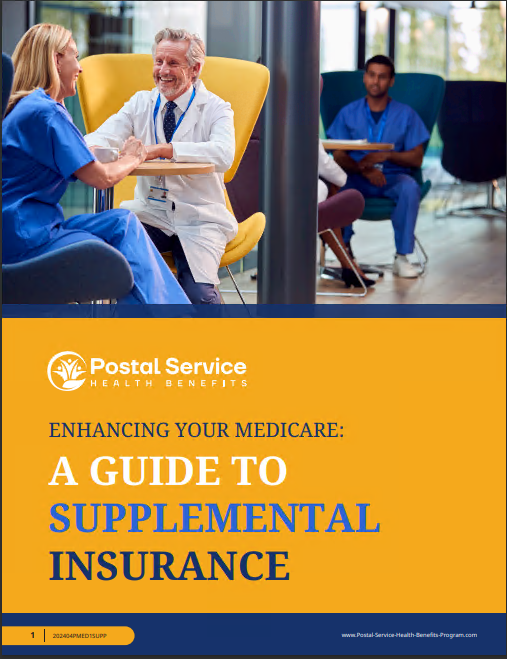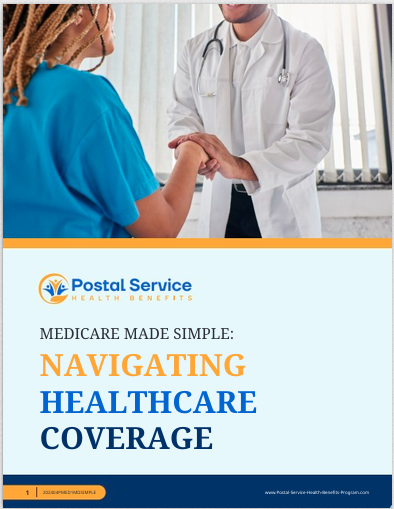Key Takeaways
- Coinsurance is a shared cost between you and your insurance provider for covered healthcare services.
- Understanding how coinsurance works within PSHB plans can help you better manage your out-of-pocket healthcare expenses.
Learn About How Coinsurance Works in Postal Service Health Benefits
Postal Service Health Benefits (PSHB) offer comprehensive healthcare coverage to USPS employees. One crucial aspect of these benefits is coinsurance, a cost-sharing arrangement that directly impacts your out-of-pocket expenses. This article will delve into the specifics of how coinsurance works in PSHB plans, compare it with other cost-sharing methods, and provide strategies to manage these expenses effectively.
What Is Coinsurance and How Does It Apply to PSHB?
Coinsurance is a percentage of the cost of a covered healthcare service that you are required to pay after you have met your deductible. Unlike copayments, which are fixed amounts paid at the time of service, coinsurance is a variable cost that depends on the total cost of the service.
Example of Coinsurance in PSHB
Suppose your PSHB plan has a 20% coinsurance rate and a $1,000 deductible. If you require a medical procedure that costs $3,000:
- Paying the Deductible: First, you will need to pay your $1,000 deductible out-of-pocket.
- Applying Coinsurance: After the deductible is met, your coinsurance kicks in. You will pay 20% of the remaining $2,000, which is $400.
- Insurance Coverage: Your insurance covers the remaining 80%, which amounts to $1,600.
In this scenario, your total out-of-pocket cost for the procedure would be $1,400 ($1,000 deductible + $400 coinsurance).
Understanding coinsurance helps you anticipate and manage your healthcare expenses, especially for high-cost services.
The Role of Coinsurance in Your Overall PSHB Costs
Coinsurance is one of several out-of-pocket costs you need to consider when evaluating your PSHB plan. These costs include your premium, deductible, copayments, and coinsurance. Together, they determine your total healthcare expenses for the year.
Interaction with Deductibles
The deductible is the amount you pay before your insurance starts covering a portion of your healthcare costs. Once the deductible is met, coinsurance applies. For instance, if your deductible is $1,500 and your coinsurance rate is 20%, you will pay the first $1,500 out-of-pocket before the 20% coinsurance is applied to subsequent costs.
Out-of-Pocket Maximum
The out-of-pocket maximum is the limit on the total amount you pay during a policy period (usually a year) for covered services. This includes your deductible, coinsurance, and copayments. Once you reach this limit, your insurance covers 100% of covered services for the remainder of the year.
Financial Planning
Understanding how coinsurance fits into your overall PSHB costs allows you to plan your finances better. By knowing your deductible, coinsurance rate, and out-of-pocket maximum, you can estimate your potential healthcare expenses and budget accordingly.
Comparing Coinsurance with Other Cost-Sharing Methods in PSHB
It’s important to understand the differences between coinsurance, copayments, and deductibles, as they all contribute to your total healthcare costs but function differently.
Coinsurance
Coinsurance is a percentage of the cost of a covered service that you pay after meeting your deductible. This cost-sharing method means that your out-of-pocket expense varies with the cost of the service.
Example:
- If your plan has a 20% coinsurance rate and you have a $1,000 deductible, after meeting the deductible, you pay 20% of subsequent covered service costs.
Copayments
Copayments (or copays) are fixed amounts you pay for specific healthcare services, such as doctor visits or prescription drugs. Copayments do not count towards your deductible and are typically paid at the time of service.
Example:
- You visit your primary care physician and pay a $30 copayment. This amount remains the same regardless of the service’s total cost.
Deductibles
The deductible is the amount you must pay out-of-pocket before your insurance begins to cover a portion of your medical expenses. Higher deductibles usually correspond with lower premiums and vice versa.
Example:
- You have a $1,500 deductible. For a $3,000 medical procedure, you pay the first $1,500. After that, coinsurance applies to the remaining $1,500.
Out-of-Pocket Maximum
The out-of-pocket maximum includes your deductible, coinsurance, and copayments. Once you reach this maximum, your insurance covers 100% of covered services for the rest of the policy period.
Example:
- If your out-of-pocket maximum is $6,000, once your cumulative out-of-pocket costs (deductible, coinsurance, copayments) reach this amount, your insurance pays for all covered services.
Strategies to Reduce Coinsurance Expenses in PSHB Plans
Effectively managing your coinsurance costs can significantly reduce your overall healthcare expenses. Here are some strategies to consider:
1. Opt for In-Network Providers
In-network providers have pre-negotiated rates with your insurance, which are typically lower than those of out-of-network providers. Choosing in-network providers lowers the total cost of services, thus reducing your coinsurance payments.
2. Familiarize Yourself with Your Plan’s Coverage
Review the summary of benefits and coverage provided by your PSHB plan to understand what services are covered and the associated coinsurance rates. Being well-informed helps you plan for potential expenses and avoid unexpected costs.
3. Take Advantage of Preventive Services
Many PSHB plans cover preventive services, such as annual check-ups and screenings, at no cost to you. Utilizing these services can help detect health issues early, potentially reducing the need for more costly treatments that involve coinsurance payments.
4. Utilize a Health Savings Account (HSA)
If you are enrolled in a high-deductible health plan (HDHP) within PSHB, consider setting up a Health Savings Account (HSA). Contributions to an HSA are tax-free, and the funds can be used to cover qualified medical expenses, including coinsurance. This can effectively lower your out-of-pocket costs.
5. Plan and Budget for Healthcare Expenses
Create a budget that accounts for potential coinsurance payments. Estimating your annual healthcare needs and costs can help you set aside funds to cover your share of medical expenses, preventing unexpected financial strain.
6. Monitor Your Annual Out-of-Pocket Maximum
Be aware of your plan’s out-of-pocket maximum. Once you reach this limit, your insurance covers 100% of covered services for the rest of the year. Knowing this can provide peace of mind and help you manage your finances, especially if you anticipate high medical expenses.
7. Seek Cost-Effective Medical Services
For non-emergency services, look for cost-effective options. Prices for medical procedures can vary widely between providers and facilities. Use price transparency tools and discuss costs with your healthcare provider to find more affordable options, thereby reducing your coinsurance burden.
8. Stay Updated on Plan Changes
Insurance plans can change annually, affecting coinsurance rates and coverage options. Stay informed about these changes by reviewing the Annual Notice of Changes (ANOC) provided by your insurer. Adjust your healthcare strategy accordingly to optimize your benefits and minimize costs.
Understanding In-Network vs. Out-of-Network Coinsurance Rates in PSHB
Choosing between in-network and out-of-network providers can significantly impact your coinsurance expenses. Here’s how it works within PSHB plans:
In-Network Providers
In-network providers have agreements with your insurance company to offer services at reduced rates. These negotiated rates mean lower overall costs, and consequently, lower coinsurance payments for you.
Example:
- If the cost of a service is $1,000 and your coinsurance rate is 20%, you pay $200, and your insurance covers $800.
Out-of-Network Providers
Out-of-network providers do not have agreements with your insurance company, often leading to higher costs for services. Your insurance may cover a smaller percentage of the cost, increasing your out-of-pocket expenses.
Example:
- For the same $1,000 service, if your insurance covers only 60% and your coinsurance rate is 40%, you would pay $400, and your insurance covers $600.
Balance Billing
When you use out-of-network providers, you may also face balance billing, where the provider bills you for the difference between their charge and what your insurance pays. This can significantly increase your out-of-pocket costs.
Example:
- If the provider charges $1,500 for a service, and your insurance only covers $1,000, you may be billed for the remaining $500.
Strategies to Maximize In-Network Savings
- Check Provider Networks: Always verify whether a provider is in-network before receiving services.
- Use Insurance Tools: Utilize your insurance company’s online tools to find in-network providers and facilities.
- Get Referrals: For specialized care, get referrals from your primary care physician to ensure the specialist is in-network.
Conclusion
Understanding how coinsurance works within Postal Service Health Benefits (PSHB) plans is essential for managing your healthcare expenses. By knowing the role of coinsurance, comparing it with other cost-sharing methods, and implementing strategies to reduce out-of-pocket costs, you can make informed decisions about your healthcare coverage. Staying within the network, utilizing preventive services, and planning your finances effectively can help you navigate the complexities of coinsurance and optimize your PSHB benefits.
Contact Information:
Email: [email protected]
Phone: 8135553456







